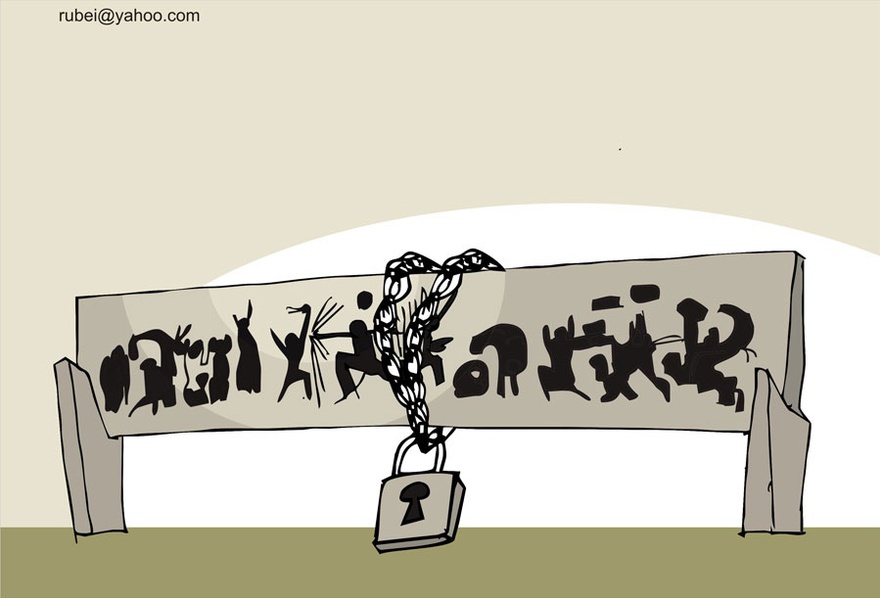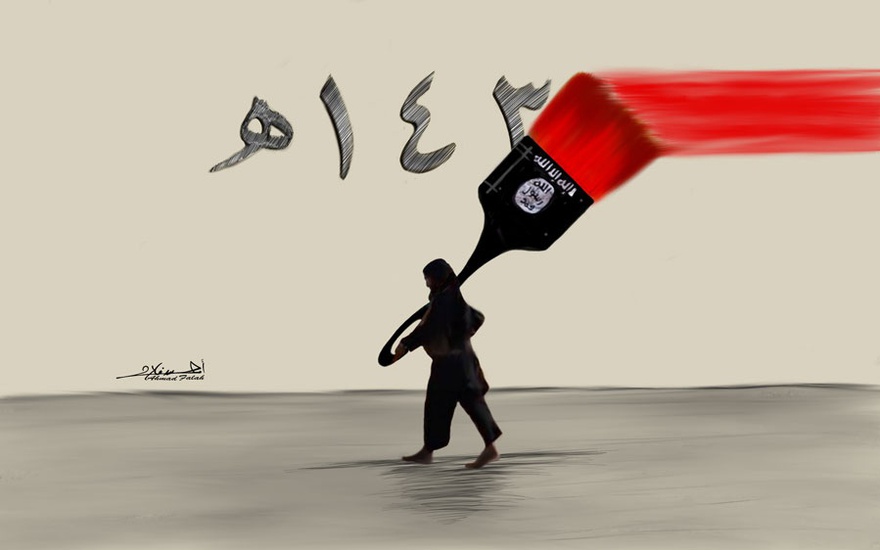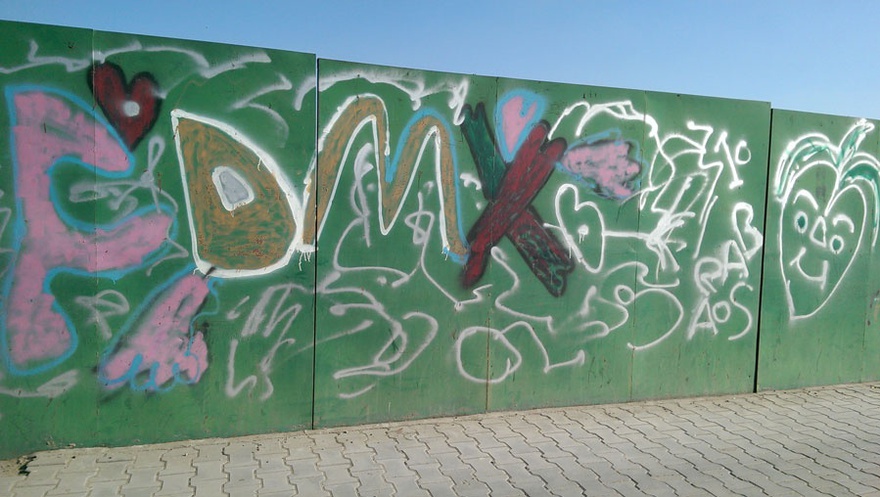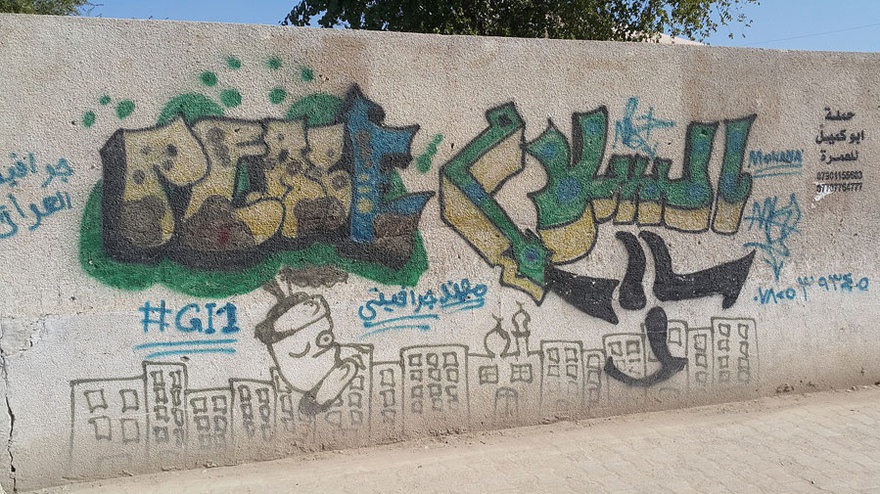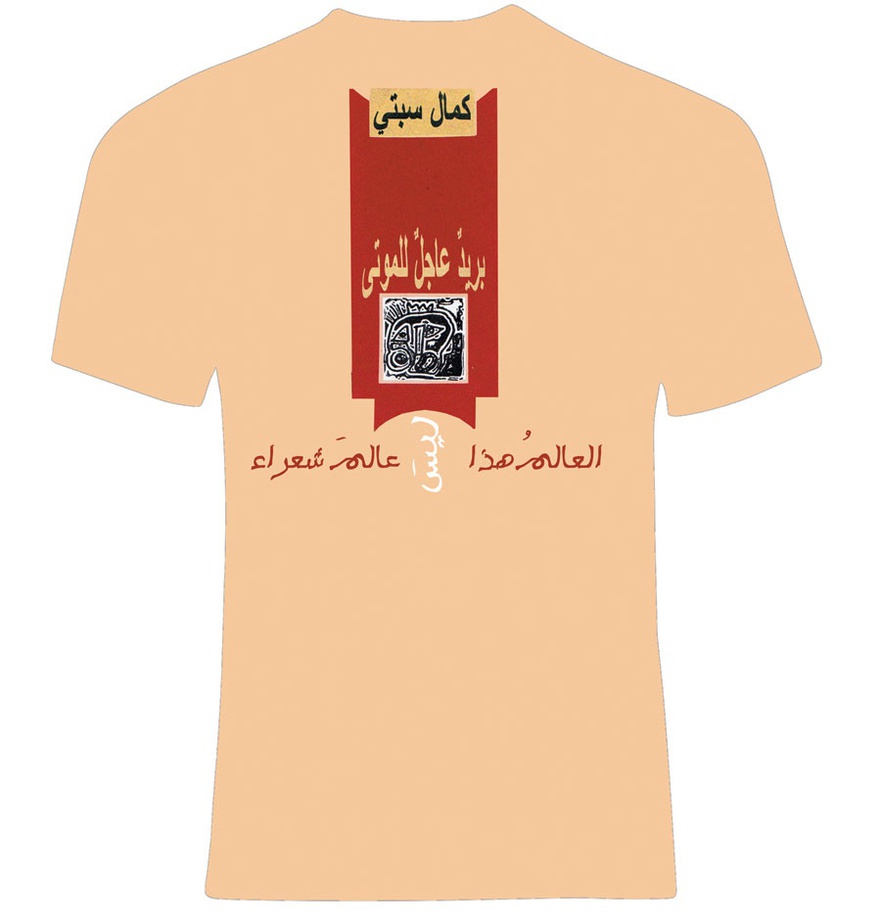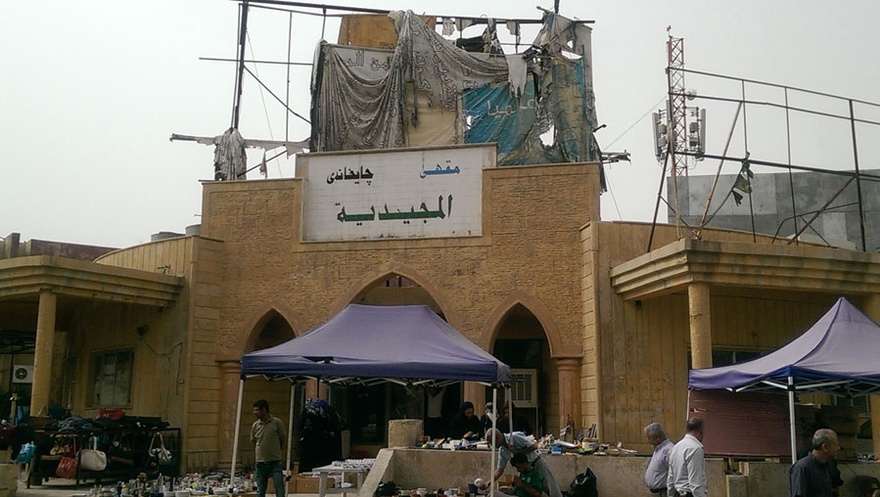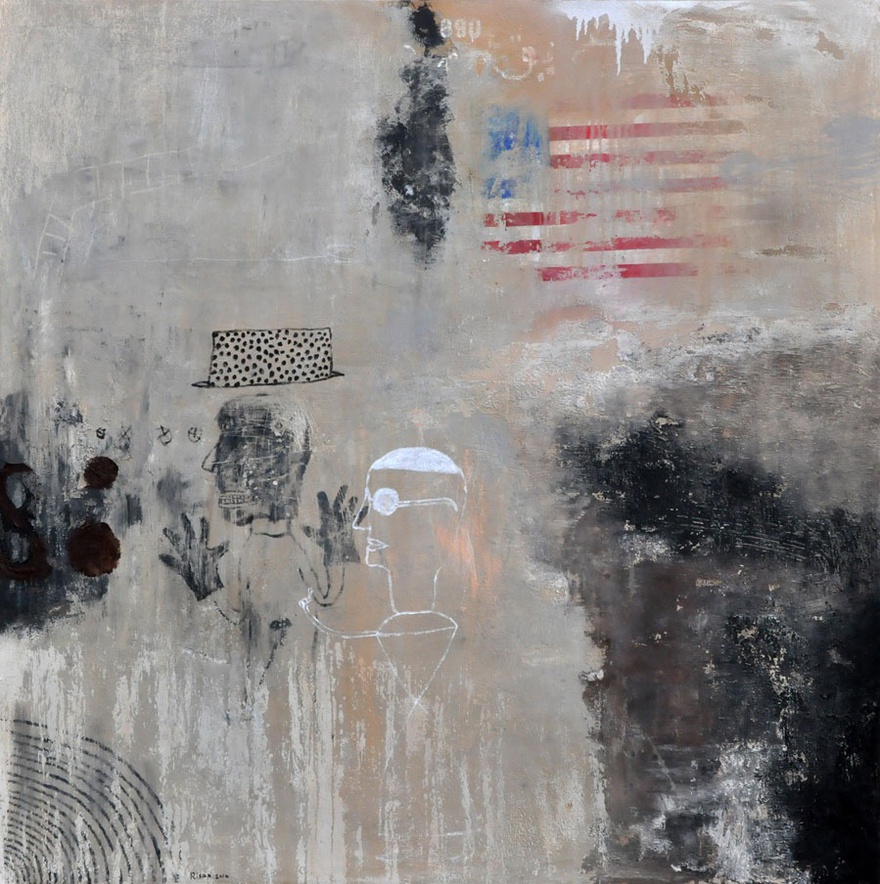Publications
Future Imperfect
Hussam al-Saray: in conversation with Ala Younis | A Cultural Encyclopaedia of Iraq
Since 2013, writer and poet Hussam al-Saray has been putting together An Outline of Iraqi Culture 2003–2013, an encyclopaedia that documents forms and characteristics of a decade of Iraq's cultural production in the aftermath of 2003. His research involved traveling to different cities in and out of Iraq, as well as dialogues and reflections with the active practitioners, and a large number of contributions. The encyclopaedia is planned to come out in almost 600 pages and consists 30 chapters and 60 texts that cover fine arts, poetry, music, calligraphy, and returning artists, as well as virtual meeting places. In this interview, Al-Saray speaks about the book's structure, content, methodology and the hardships related to producing such comprehensive research within fragile conditions of cultural work, security, and scarcity of resources.
Ala Younis: You are currently working on a project to create an encyclopaedia in which you collect the various forms of Iraqi cultural productions in the aftermath of 2003. Can you talk more about this project?
Hussam Al-Saray: I have discovered that the stories related to issues of security and politics are holding sway over the news from Iraq and other events. Accordingly, the abundant and rich cultural events in Iraq, which have recently acquired various new characteristics, have not reached the 'other' along the lines we desired, starting from the 'Arab other' to what we can label the 'international other'. When I travel to an Arab country for instance, I notice that the audience only knows what the traditional, mainstream Arab media is conveying and this is very disheartening for any cultural operator. They are not acquainted with the new cultural entities established in the fields of cinema and theatre and the presence of a new pedigree of photographers. They are also unaware of this new work in cultural journalism, of the considerable challenges that cartoonists are confronted with, in addition to being oblivious of the wealthy, multi-faceted artistic landscape inside and outside Iraq. These circumstances triggered a personal initiative to create an encyclopaedia on the Iraqi culture in the aftermath of 2003. This project is meant to historically represent a variety of production and cultural presence related to this era. So I developed a plan of action to edit this book, entitled An Outline of Iraqi Culture 2003–2013, and formed a working group.
AY: Were there any similar encyclopaedias before 2003?
HAS: Before really working on the project, I asked more than one expert – those who are in the Iraq National Library and Archives or my friends who are more knowledgeable than me in the field – whether there was ever an encyclopaedia that records this historical sequence, including this diversity and presence of the different cultural and artistic representations in Iraq. They answered that they haven't found any book that pertains to this description. This was a major incentive to fully adopt and work towards materializing this idea. Moreover, it is widely known that, because of the nature of life in Baghdad today and in the whole country, culture is being unacceptably relegated to the background. The question is whether independent practitioners like myself and others should yield to this reality. I took it upon myself to challenge the idea that this is an arduous, time and energy-consuming project, and to defy the doubts about realizing this perilous multi-chapter initiative.
AY: Can you talk about the chapters of the book?
HAS: The book contains 30 chapters. A year before, and even at the moment of conceiving and beginning the project, I decided to work on between 18 to 20 chapters in the book but that changed after conducting the research and revising the content, and also after listening to some of my friends inside and outside Iraq, some of who gave extremely harsh criticism. The various chapters in this project not only take into consideration the variety of artistic forms in the Iraqi cultural spectrum, but also deal with the way the cultural act is confronted with the unstable and difficult circumstances the country is witnessing, and with this new historical episode and its fears, ambitions and hopes, as well as its yearning for a future that is still unknown.
AY: Can you give examples to illustrate this?
HAS: For instance, there is a chapter entitled 'Returners' that tells the stories of those who returned to Baghdad after having been immigrants, fugitives or exiled in former times and witnessed new moments in the city after an absence that lasted for decades.. Through their description of the cultural scene after 2003, and their opinions on the urban side of the city, the chapter captures the moments of their return and records their shock after re-meeting the city that they had been apart from.
AY: How did you manage to obtain those testimonies? Where did you find the witnesses?
HAS: By writing to a number of expatriates who returned to Baghdad. We collected ten to 13 stories from people who have established reputations in the Iraqi cultural scene. They wrote very precise texts that testify to the multitude of the artistic landscape in Iraq, and its distinguished contradiction. It is certainly a positive and a creative difference, which reflects moments of the expatriate's disappointment when he is home, but this frustration is after all a natural human feeling.
AY: So who are the contributors to this book?
HAS: I endeavoured to make this project encompass operators from various artistic and cultural fields; among them are painters, film directors and poets. There is also a researcher who is involved in relief work but who is also a man of culture. Among the participants there are also novelists and short story writers, in addition to other diverse cultural and artistic occupations. To express this multitude caused a delay and other issues became present in this encyclopaedia – for instance, the chapter entitled 'Phenomena', which captures a set of cultural and artistic phenomena, tries to collect snapshots from Iraqi cultural scene after 2003. It depicts, for example, the movement of the cultural act towards the streets; the protests of intellectuals and men of culture; the way the overwhelming presence of the 'concrete' was manipulated; and how the independent and official cultural circles have dealt with it. There are other chapters that deal with the nature of cultural presence inside social media and that discuss the presence of culture and cultural practitioners in these virtual spaces.
The book also features a chapter entitled 'Cafés and Facebook', which is the fruit of a journey from Al Sulaymaniyya to Basra, and back.It delineates two types of cafés. The first part of the chapter paints the picture of real cafés from the trip and focuses on the drastic transformations they have undergone. It includes Kalturi Café in Al Sulaymaniyya, The Literary Café in Basra, Arjeta Café and Chahbandar Café in Baghdad, and other coffee shops in Karbala and Najaf, as well as explaining the shutting down of cafés in Mosul and their absence in Al Anbar. The second part, 'Facebook', investigates this space as a virtual café, a world swarming with moods and views about the performance of intellectual people inside this space. Their presence in this social medium can be traced to the fact that they fear explosions in real spaces, so all their existence becomes attached to such a virtual world.
The chapter entitled 'For Memories' collects invitation cards to cultural events, as a witness to the printed cultural presence. We tried to collect print invitations from 2003 to 2013, and the reader will read this chapter in the form of this printed material. The truth is that we designed this chapter to avoid, as much as possible, subsequent problems that may arise – for instance, some may protest that they participated in an event but they were not mentioned in the chapter 'Fine Art' or in 'Texts' (one of the most difficult chapters in the book), or in 'Arabic Calligraphy' that discusses calligraphy art and its presence in the Iraqi cultural scene. So, 'For Memories' collects those invitation cards and displays them to the reader in an independent chapter that further explores the nature of cultural life through this printed material that was handed to the audience before attending a cultural event.
AY: This is more than just an exploration; there are not many books whose material is based on including a whole archive of invitation cards. Can you tell the story of writing this encyclopaedia, collecting the material, and about your journey between the cities and your contact with people?
HAS: Currently, I have more than 400 participations and more than 100 institutions in the book and we are now putting the final touches to it. The final work of editing, designing and proofreading has started but the only problem that has not been solved yet is the place of publishing.
The materials were collected by making several trips to various cities. I have visited most of the Iraqi towns, except those where there is mayhem or war. I went to Al Sulaymaniyya and to Erbil. I visited Basra, Amarah and Najaf. In Baghdad I paid a visit to most, if not all, the active cultural organizations and all the magazines – the book contains a whole chapter dedicated to magazines, and another one for publishing houses.
The main achievement of this project is the consolidation of the spirit of Iraqi culture as an entity rooted within and without. The book argues against the separation between the outside and the inside that some people would like to instil into the Iraqi cultural scene. In 'Fine Arts' for example, more than two-thirds of the painters and sculptors that the chapter includes are not living Iraq; the remaining third are Iraq-based artists. This is credited in large part to the structure of Iraqi culture as a unified entity, liberated from the constraints and dogmas of those who are propagating the poisonous ideas of the inside and the outside. It is a culture that is distinguished by its disparate potentials; yet its presence is for the interest of Iraqi achievement.
The process of collecting materials was not limited to only making trips between the cities; going to Beirut and meeting the painters and listening to their opinions; or constantly reaching out to painters and writers from London, the USA and other Arab countries – there was also the continuous consultation that the Internet and social media channels allow. Take the example of the chapter entitled 'Arabic Calligraphy' – I have consulted several people and was enlightened by their views, in order to achieve maximum success. The collection process rested on some of my friends' efforts, as the mission of the team I chose finished during the first six months. I admit that I was utterly wrong in time, management and evaluation. For instance, the chapter entitled 'Interviews' consists of dialogues with 20 leading artists and thinkers. The interviews included Rashid Al-Khayoun on the relationship between culture and history, Khaled Al-Sultani on architecture, Mohammad Ghazi Al-Akhras on cultural journalism, Fatima Al-Mohsen on the issue of alienation and writing; and Fakher Mohammad, the famous painter, about the issue of fine arts. For this chapter I often waited more than four months for the contributors to deliver their works and this shows the nature of the problems I encountered during these years. Chapters like 'Interviews', 'Texts' and 'Fine Art' have delayed the completion of this project because they are very demanding and difficult to conceive. The material collection for those chapters was the most arduous task in the whole work.
AY: Does the difficulty lie in the absence of the participants' timely response or in the scarcity of materials? Are the materials only about the transformations or the reading of them after 2003, or general texts about visual arts? What did you ask the writer or the artist to do in his text?
HAS: When we officially invited the writers and artists to participate in this project, we notified them that they should explore the new spirit in the Iraqi cultural landscape after 2003. Most of the responses conspicuously went in this direction and participants sent paintings, artistic works and literary texts that deal with this new fervour in Iraq. We asked the painters, as a first requirement, to deliver works that were exclusively produced after 2003 and we informed them that their works should have a view on the Iraqi scene with all its political, social, cultural and security representations. Apart from that, the artists were free to choose whatever subject they liked. The chapter entitled 'Texts', which includes more than 60 entries written by novelists, short fiction writers and poets, essentially portrays this period. For example, there are poems talking about the kidnapping of a poet's son who disappeared forever. Other texts depict the year 2006, the period of complete collapse and insufferable violence in Iraq. With regards to short fiction, we dedicated a part entitled 'Writing' to non-genre fiction that deals with diaries and stories of the Iraqi mayhem after 2003. Other chapters are purely artistic. For example, in the chapter 'Arabic Calligraphy', one cannot stipulate the same conditions required in other chapters like 'Texts' or 'Fine Art', This is due to the nature of Arabic calligraphy as a separate art with separate characteristics. Yes, some participants did send innovative works full of creative spirit in the field of Arabic calligraphy. In another chapter called 'Caricature' we tried to emphasize the collision that this kind of art creates when confronting real Iraqi life. But as a whole, the impending problem that we have faced since the beginning of the project is the lack of awareness of some cultural operators of the need to interact with such a project that would be an important document if achieved and published.
AY: The delay is not that big – you started working on the project in 2013 and you needed this time to make an encyclopaedia of 30 chapters. Is the book going to be published in one volume? How many pages do you expect it to be?
HAS: I expect that it will exceed 600 large pages – some texts are 2,000 or 3,000 words, or one or two pages. However, some people in Baghdad said that they expected the work to be finished in one year and they continue to ask me where is the book now, perhaps not imagining the hardships we have encountered. When you go to a city you need more than ten days to collect the contributions. Imagine the delay that results from waiting for pictures of a café in Karbala or in Diyala. This is not to mention that the grant awarded by the Iraqi Ministry of Culture was not enough. But the most important issue today is how to get publicity for the book.
AY: Is the book only in Arabic?
HAS: Yes, it is in Arabic but at the end of the book there summaries in English and in Kurdish.
AY: How many visual artists are there?
HAS: There are 60 painters, sculptors and ceramists. Some of them have passed away but the majority of them are still alive.
AY: How many people are helping you with this project?
HAS: Only two at the moment: one is a proofreader and the other is a designer but in the first six months of the project I had a working group that included four researchers. There is still an advisory aspect now. I'm in touch with a group of five people and we are always asking ourselves 'what are we doing here?', 'how do we solve such a problem?' and 'if an artist declines to participate in a chapter, what are the possible measures?' These are roughly the project's main traits.
AY: So the book features Iraqi thinkers, artists, writers, poets and film directors?
HAS: Yes, there is a chapter dedicated to cinema and another one on musical bands inside and outside Iraq, like UTNN, Solo Baghdad and Baghdad, who's former name is Munir Bashir Band. There is about one page for every band, including a picture, a biography and their main achievements.
AY: There is a radical change in Iraq, and the importance of this book rests on its exclusive capture of those changes.
HAS: This project is eventually a document for history in which we read, examine and revise this crucial period of our times. The most important thing is that courage in achieving a work in which you collect all these names and cultural institutions in a unified project. The percentage of its potential success is left to others to evaluate.
Hussam al-Saray is a poet and a cultural journalist. Al-Saray's experience in cultural journalism includes writing for daily newspapers and news agencies, as well as for local TV channels. He is an operator in the Iraqi cultural scene and one of the contributors to the foundation of new cultural entities at the level of the regulatory framework. He also acts as an advisor for cultural institutions and is the current director of the Iraqi House of Poetry. He is based in Baghdad.
Ala Younis is a research-based artist. Collaboration forms a big part of her practice, as does curating, and film and book projects. Younis's projects are expanded experiences of relating to materials from distant times and places; working against archives play on predilections and how its lacunas and mishaps manipulate the imagination. She is contributing editor to Ibraaz, on the Advisory Board of Berlinale's Forum Expanded, and co-founded with Maha Maamoun the non-profit publishing initiative Kayfa ta.

